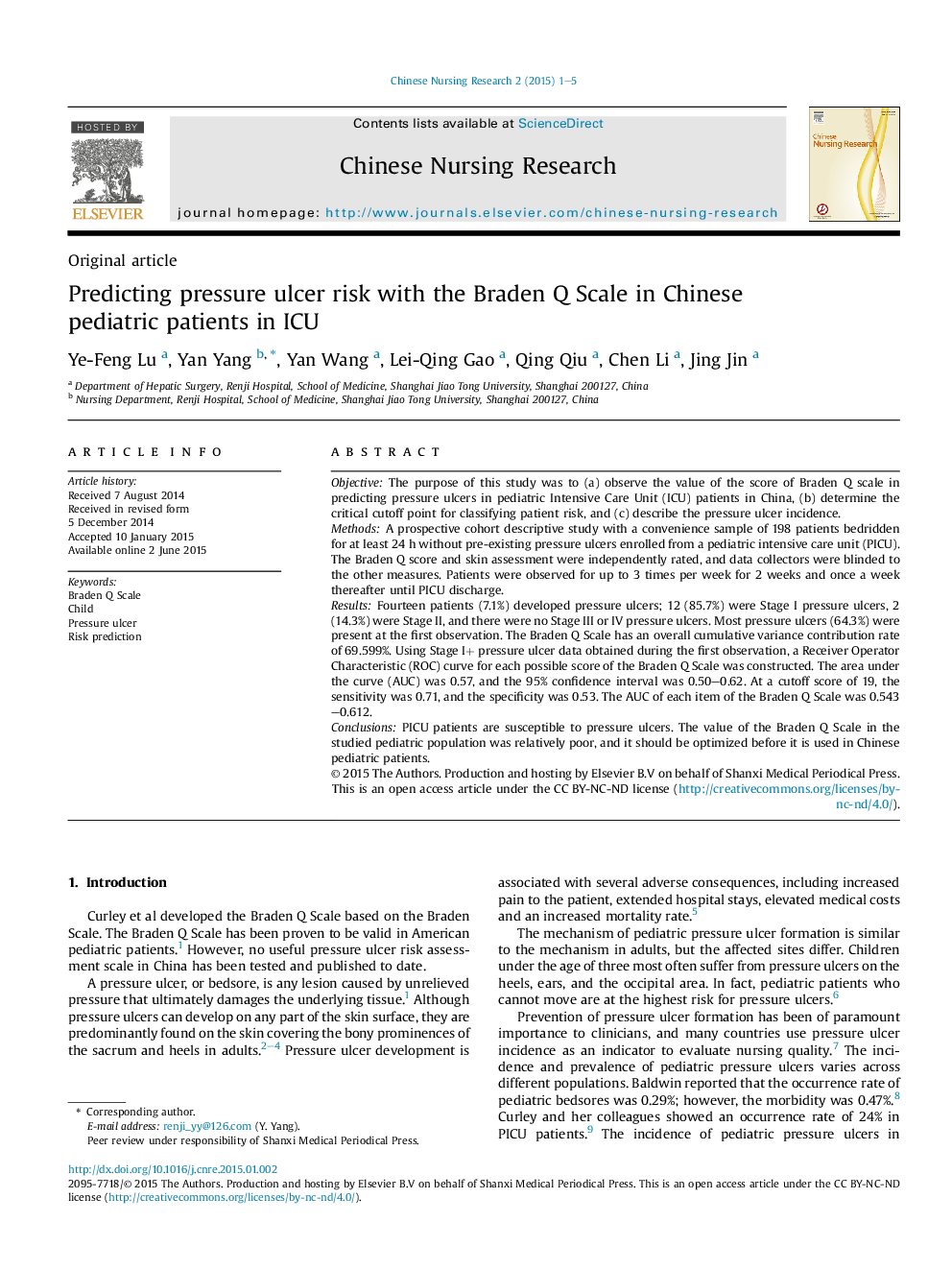| Article ID | Journal | Published Year | Pages | File Type |
|---|---|---|---|---|
| 2645635 | Chinese Nursing Research | 2015 | 5 Pages |
ObjectiveThe purpose of this study was to (a) observe the value of the score of Braden Q scale in predicting pressure ulcers in pediatric Intensive Care Unit (ICU) patients in China, (b) determine the critical cutoff point for classifying patient risk, and (c) describe the pressure ulcer incidence.MethodsA prospective cohort descriptive study with a convenience sample of 198 patients bedridden for at least 24 h without pre-existing pressure ulcers enrolled from a pediatric intensive care unit (PICU). The Braden Q score and skin assessment were independently rated, and data collectors were blinded to the other measures. Patients were observed for up to 3 times per week for 2 weeks and once a week thereafter until PICU discharge.ResultsFourteen patients (7.1%) developed pressure ulcers; 12 (85.7%) were Stage I pressure ulcers, 2 (14.3%) were Stage II, and there were no Stage III or IV pressure ulcers. Most pressure ulcers (64.3%) were present at the first observation. The Braden Q Scale has an overall cumulative variance contribution rate of 69.599%. Using Stage I+ pressure ulcer data obtained during the first observation, a Receiver Operator Characteristic (ROC) curve for each possible score of the Braden Q Scale was constructed. The area under the curve (AUC) was 0.57, and the 95% confidence interval was 0.50–0.62. At a cutoff score of 19, the sensitivity was 0.71, and the specificity was 0.53. The AUC of each item of the Braden Q Scale was 0.543–0.612.ConclusionsPICU patients are susceptible to pressure ulcers. The value of the Braden Q Scale in the studied pediatric population was relatively poor, and it should be optimized before it is used in Chinese pediatric patients.
